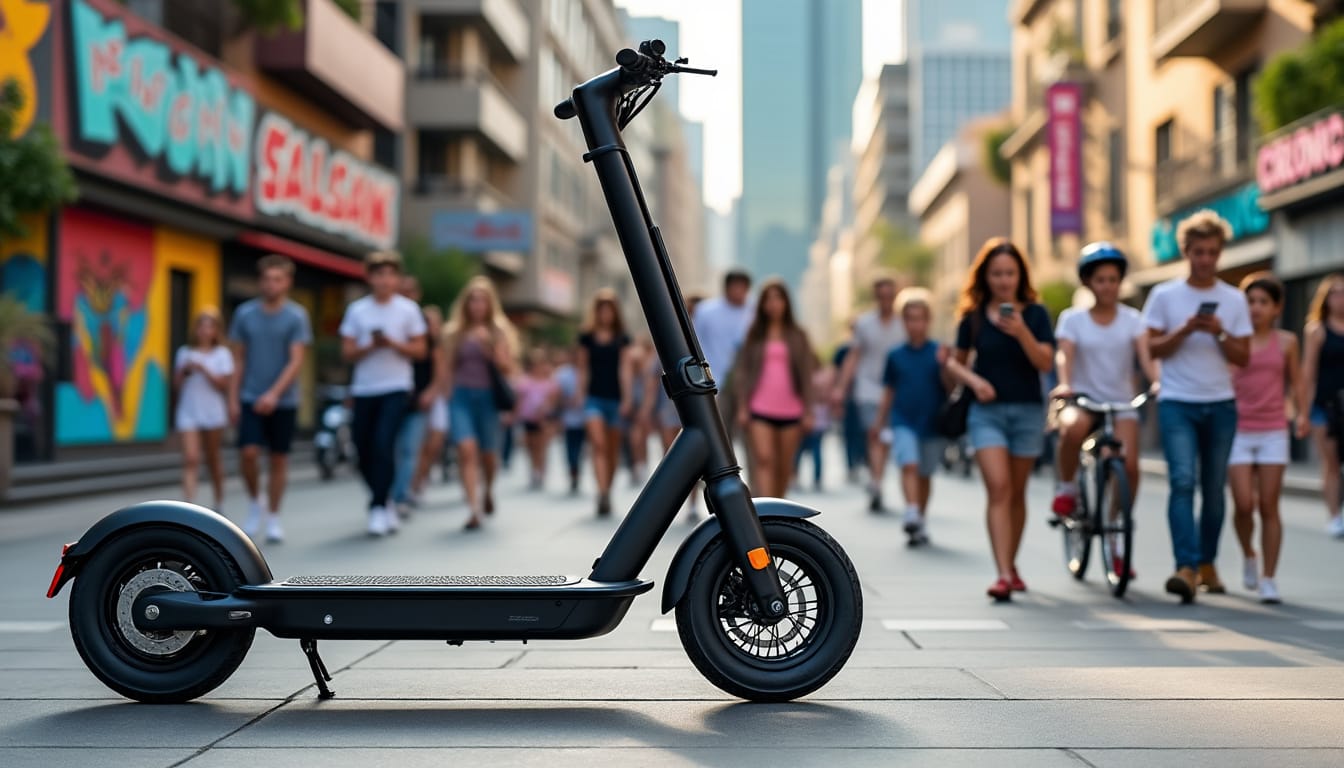Scooters and motorcycles prohibited: discover the models involved

In the current context, where regulations regarding two or three-wheeled vehicles are evolving significantly, it is crucial to understand the implications of recent ministerial orders concerning scooters and motorcycles. Indeed, several models that had been widely marketed and used by consumers are now considered illegal. This change in legislation raises important questions about road safety, vehicle compliance, and consumer rights. This article delves deeply into the models of scooters and motorcycles that are now prohibited, as well as the consequences for their users.
Scooters and motorcycles now banned: what is the legal framework?
The recent ministerial orders have introduced a legal framework aimed at clarifying which two or three-wheeled vehicles can circulate on the roads of Quebec. According to these provisions, scooters and motorcycles that do not carry the national safety mark NSVAC cannot be registered. This means they are automatically excluded from public circulation. This mark certifies that the vehicle meets the current safety standards, which is essential to ensure the safety of road users.

The characteristics that make a vehicle illegal include:
- Tires and wheels similar to those of a motorcycle or moped.
- A set of footrests or a platform for the driver's feet.
- A body covering part or all of the frame, with a seat that is not height-adjustable.
- An engine capable of reaching a speed exceeding 32 km/h or having a power greater than 500 watts.
This list of criteria has been established to ensure that only compliant vehicles can circulate. Models such as the Écolo Lithium scooter and the Faster K1 electric scooter have become emblematic of this transition, being deemed non-compliant by the courts, despite features that may appeal to users.
Impacts for users: compliance and potential fines
Users of scooters and motorcycles that do not meet these new requirements find themselves in a tricky situation. Indeed, since the regulation has been enforced, many cases of police interceptions have been reported. Officers check the compliance of vehicles based mainly on visual aspects. They look for the NSVAC mark and may also refer to other physical characteristics of the vehicle during inspections. Drivers caught in violation may receive fines, and their vehicle may be confiscated. User testimonials are numerous and often very critical of these new regulations.
Here are some reactions from internet users regarding the ban:
- “I have been riding without issue for years, and now I feel like a criminal!”
- “Why not restrict these vehicles only to bike paths?”
- “These vehicles help reduce carbon emissions. Their ban seems excessive.”
However, the authorities justify these measures by the necessity to ensure the safety of users on public roads, particularly cyclists. Many experts agree that an increased presence of non-compliant vehicles poses a danger on the road, which legitimizes such regulation.
List of scooters and motorcycles banned in 2025
At the heart of this change, several iconic models find themselves on the black list of banned vehicles. Here is a summary table of the affected models, along with their main technical characteristics:
| Model | Type | Characteristics |
|---|---|---|
| Écolo Lithium scooter | Electric scooter | Platform for feet, does not exceed 32 km/h |
| Faster K1 electric scooter | Electric scooter | Tires resembling those of a motorcycle, integral body |
| Model X | Motorcycle | Engine exceeding 500 watts |
| Model Y | Gas scooter | Does not carry the NSVAC mark |
This table not only exposes the banned models but also illustrates the uniformity in the regulation of scooters and motorcycles. Users must therefore be extremely vigilant when purchasing or using these vehicles, ensuring that they comply with the new standards in force.
Reactions and opinions on the ban
The impact of this prohibition is palpable in user communities. Many experienced riders express their frustration with the situation. For them, these vehicles represent a practical and environmentally friendly transportation solution. This sentiment is shared by several stakeholders in the sector who argue that motorcycles and scooters can, on the contrary, alleviate road congestion and reduce greenhouse gas emissions.

Opinions on this issue diverge:
- Opponents of the ban highlight its excessive nature, arguing for more targeted regulation.
- Supporters of the measure argue that it is necessary to preserve road safety.
- A compromise could be found by limiting their use on certain routes, such as bike paths.
Discussions surrounding this ban echo broader debates concerning the place of electric vehicles and the measures to be put in place to regulate their use in urban areas. This scenario reflects the complexity of regulating lightweight vehicles, which oscillates between safety, innovation, and sustainable development.
Compliance and future prospects for users
For scooter and motorcycle users, compliance with the new regulation is not only an obligation but also a means of continuing to enjoy their preferred mode of transport. Compliance can be ensured by following these simple steps:
- Check for the presence of the NSVAC safety mark on your vehicle.
- Ensure that your scooter or motorcycle meets the speed and power criteria.
- Consult the current opinions and regulations issued by organizations such as the SAAQ.
The future prospects seem to show a willingness to improve the safety of road users while encouraging the use of more ecological vehicles. Iconic brands like Yamaha, Honda, and Suzuki are organizing themselves to adapt to these new standards, offering compliant models that will continue to be appreciated in the market. The transition to electric or hybrid models is accelerating, and these brands play a key role in this process.
With the arrival of electric vehicles on the market, users can expect a range that is not only broader but also safer and compliant with current regulations. The challenge for manufacturers will be to combine performance, safety, and aesthetics while keeping registration and licensing costs accessible.
Overview of economic impacts
The economic effects of these legislative decisions are evolving, both for consumers and manufacturers. Users of scooters facing the ban on their vehicles find themselves with illiquid assets, while manufacturers must rethink their business strategy to adapt to new standards. Significant impacts could be observed in the lightweight vehicle market:
- Slowing sales for certain non-compliant models.
- Increased demand for models that meet NSVAC standards.
- Adaptation of marketing strategies to highlight the safety and durability of new models.
The path towards a more rigorous regulatory framework faces obstacles, but ultimately aims to foster a safer environment for all road users. The debates surrounding the ban on non-compliant scooters and motorcycles continue and reflect broader issues concerning urban mobility and the energy transition.
Leave a Reply



Articles relatifs